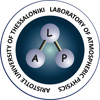About Thessaloniki
Thessaloniki/Host City
The conference will take place in the historical city of Thessaloniki, Greece. Thessaloniki, the second largest city and co-capital of Greece, is world known for the Ancient Greek, Roman and Byzantine monuments, the charming shopping thoroughfares, the indulging local cuisine and the exciting nightlife. The city was founded in 315 B.C., named after the ancient Greek princess Thessaloniki, sister of Alexander the Great, and has been a crossroad of cultures and civilizations for over 2300 years.
Renowned for its festivals, events and vibrant cultural life in general, Thessaloniki is considered to be Greece’s cultural capital. You could find more information about Thessaloniki here.
Getting around the City
Thessaloniki is located in the Northern Greece, 504 km north of Athens. You can reach the city by train, bus or car (E90 National Road). Thessaloniki has a good public transportation system.
Getting around is feasible by bus and taxis as both are easily available at low cost. Thessaloniki is not a huge city (population around 1,000,000 people). Hence, most famous attractions can be easily explored on foot. All major car rental companies have branches at Macedonia Airport.

Byzantine monuments
Thessaloniki, with its host of Byzantine monuments (due to its significance during the Byzantine period), justifiably is considered an open-air museum of Byzantine art. Wandering through the city, it is worthwhile to see:
- The churches of Acheiropoietos a three-aisled, timber-roofed basilica,
- The Holy Wisdom of God (Hagia Sophia) (7th century),
- The Panaghia (Virgin) Chalkeon (1028),
- Hosios David (12th century), St Panteleemon (late 13th or the early 14th century), is of four-columned cross-in-square type,
- Panagouda a three-aisled basilica with significant icons,
- Agios Ioannis Prodromos, Vlatadon monastery a 14th century foundation of which only the katholikon and two cisterns within the precinct survive,
- Agios Dimitrios a splendid basilica dedicated to the patron saint and protector of the city,
- The byzantine walls of the city
- The archaeological site in 3 Septemvriou St., with remnants of a cemetery basilica, a martyr and Early Christian graves.
- The byzantine bathhouse (late thirteenth century).
- The Heptapyrgion castle was raised in stages, from the early years of the Byzantine Age into the Ottoman period.

Amazing Ottoman monuments
- The White Tower (15th century), the hallmark of the city. It was built in 1536 the White Tower is a landmark and symbol of Thessaloniki, right on the water It is expected to house the new Museum of Thessaloniki’s history
- The Mosques of the Hamza Bey Cami (15th century), the Aladja Imaret Cami (1484) and the Yeni Cami (1902).
- Hamams (Turkish bathhouses): The Pazar Hamam (15th century), the Pasha Hamam (15th century), Bey Hamam (16th century), Yeni Hamam and the Yahudi Hamam.
- Bezesteni, a rectangular building with lead-covered domes and four entrances was built in the late fifteenth century and operated as a cloth market.
- Rotunda and Arch of Galerius – Roman monuments
Thessaloniki Museums
- Archaeological Museum – An exciting tour of the history of ancient Macedonia through important findings dating back to the end of 6th century B.C. The museum was inaugurated in October 1962.
- Byzantine Civilization Museum: one of the most important museums of the country, with valuable Byzantine exhibits dating back from the Early Byzantine period to the Turkish occupation.
- Jewish MuseumHoused in a preserved building built in 1904; it presents the historical course of the Jews of Thessaloniki until their genocide by the Nazis during German occupation.
- Macedonian Museum of Contemporary art. The museum houses, among other things, paintings, sculptures, engravings, photos and films made by Greek or foreign artists.

Culture and Events
- Thessaloniki Concert Hall – A newly-built, magnificent yet austere, multipurpose venue for cultural and other events. Operating since 2000 it is one of the most advanced concert venues in Europe.
- Moni Lazariston- by the monastic order of the Brothers of Mercy, and now used for cultural events.
- Mylos – (literally mill). An old industrial complex, built in 1924, today have been remodeled to house cultural events and leisure activities, as well as the industrial buildings of the old FIX Brewery and the VILKA plant.
- National Theatre of Northern Greece – Thessaloniki’s main institution for performing arts;
- International Film Festival of Thessaloniki – The country’s leading annual Cinema Festival, taking place in November;
- The Dimitria Festival – this historic institution is used as a tool, event venues are turned into participatory platforms and the limits of the festival experience are tested.

Dining and Nightlife
- Aristotelous Square – surrounded by monumental buildings and open to the waterfront for a width of 100 meters and the waterfront avenue of the city (Nikis avenue), where cafes, trendy bars, restaurants and street performers can be found.
- Navarinou Square – Full of university student’s haunts (open air cafes overlooking the ruins of the imperial palace).
- Valaoritoy district – The new trendy neighborhood where restaurants, bars and live music scenes.
- Bar rows in the city center – cluster of bars with distinct character can be found at Lori Margariti, Nikiforou Foka, Zefxidos and Valaoritou streets.

Shopping
- Modiano, Kapani and Athonos Market Halls – colorful covered halls, selling food and inexpensive clothes; there are a lot of beautiful taverns with Greek traditional music. They mostly have brilliant food.
- Tsimiski- Street – is the main shopping street and where visitors will find a selection of retailers typical of a high street. Popular international brand named goods and domestically made products share equal space in this busy retail area.
- Pastry Shops – The sweet temptations in Thessaloniki are many and the visitor can find them located in every district and every neighborhood. Every patisserie has its own character and specialty.
- Proxenou Koromila Street – the city’s most up market shopping area, where most Thessaloniki haute couture as well as international designer boutiques can be found.



